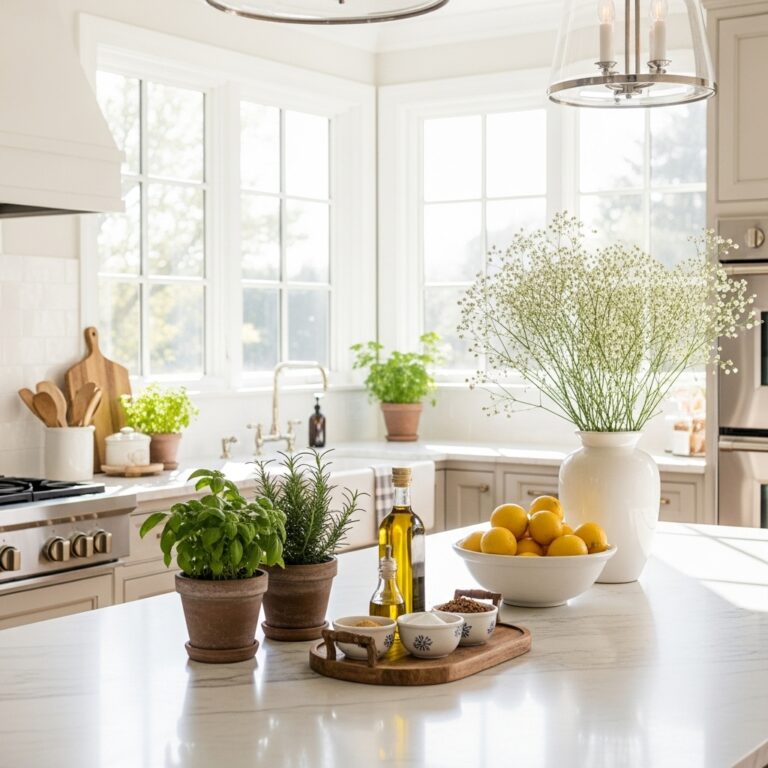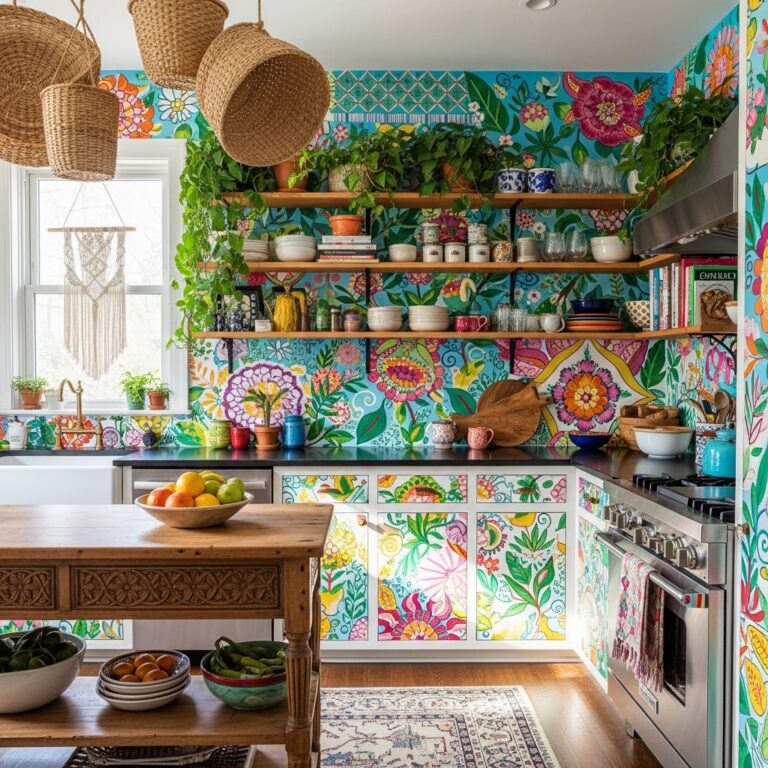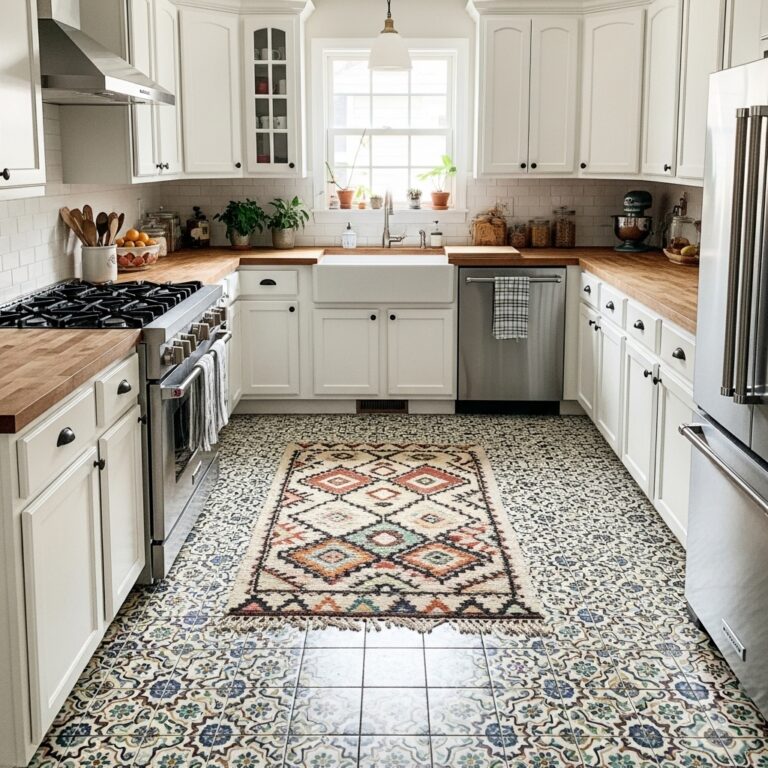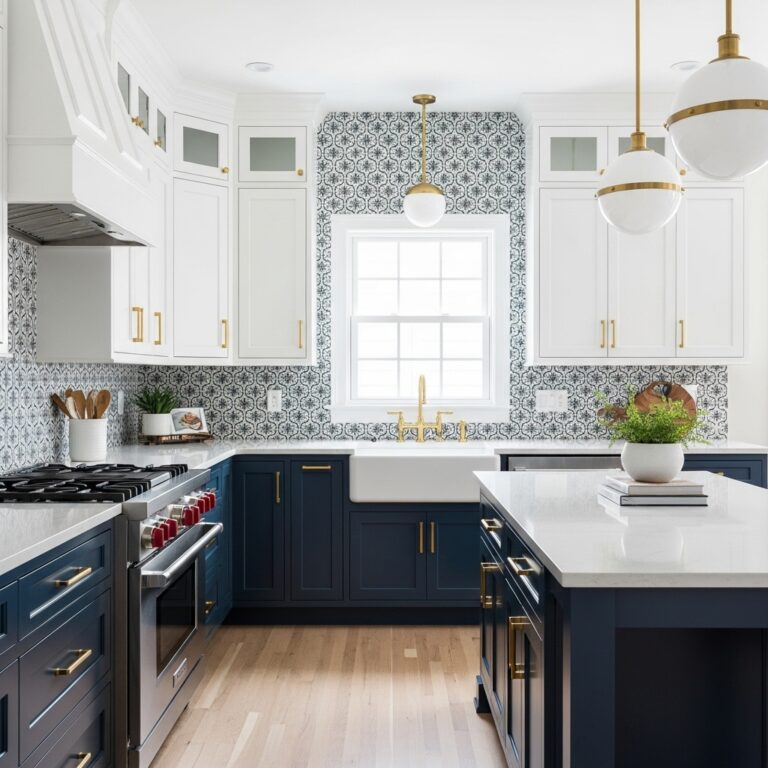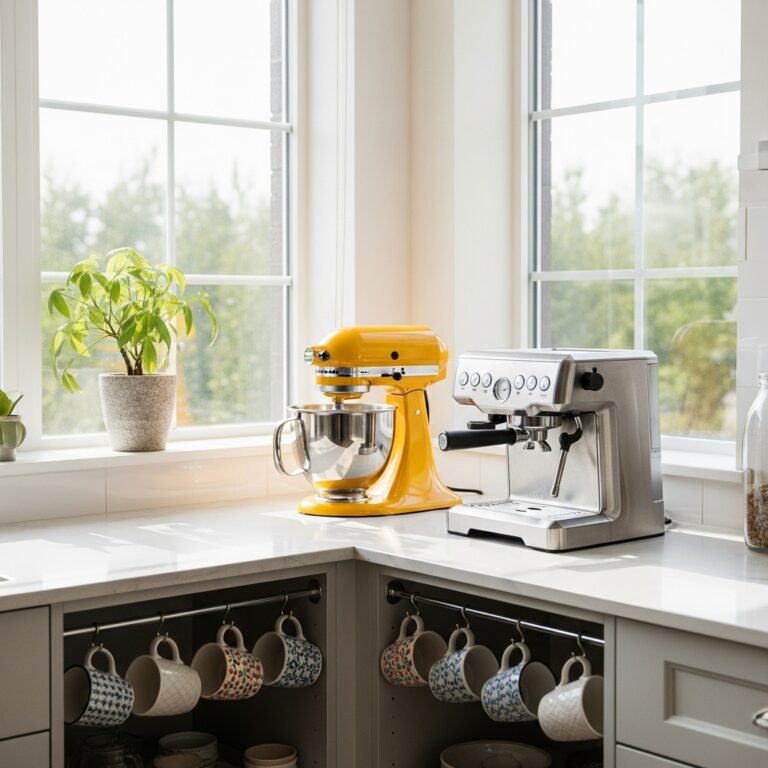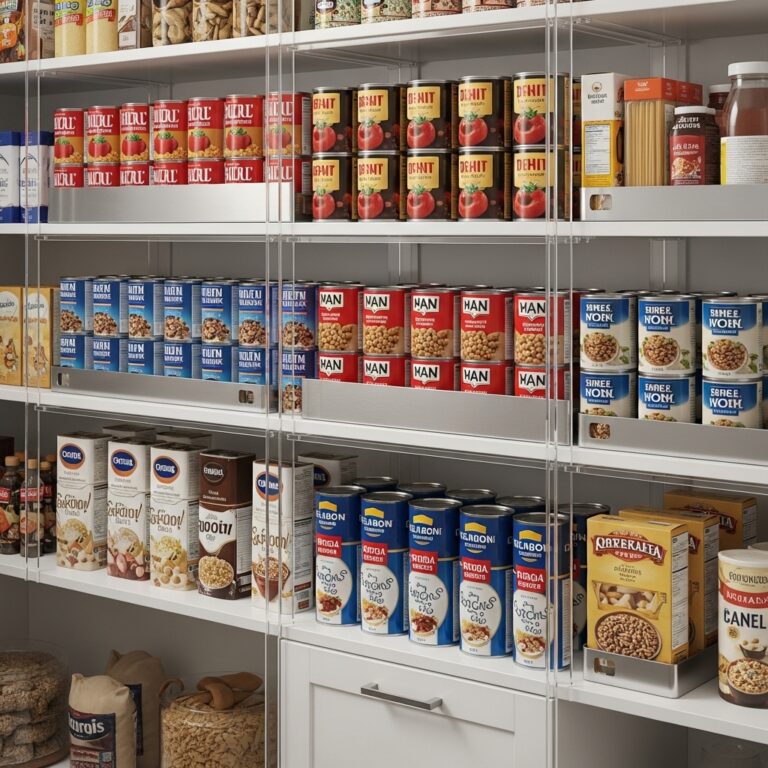8 Kitchen Cabinets Design Ideas for Modern and Functional Spaces
Kitchen Cabinets Design Ideas
Kitchen cabinets play a key role in shaping the look and function of a kitchen. They help organize space, store essentials, and add style to the room. Choosing the right cabinet design can make the kitchen more efficient and visually appealing.
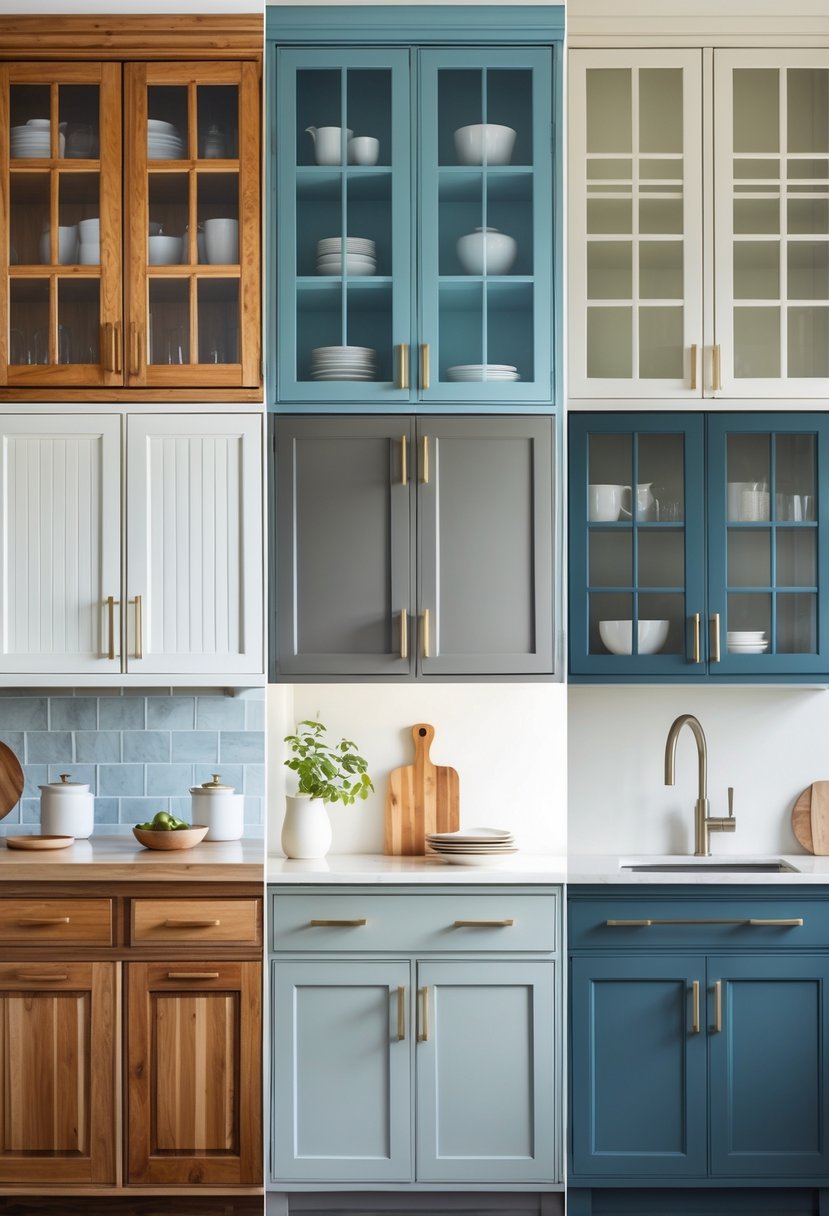
Understanding different kitchen cabinet designs helps create a space that fits both practical needs and personal taste. This guide covers eight popular cabinet styles to offer ideas for anyone planning a kitchen update or new installation.
Kitchen Cabinets Design
8 Kitchen Cabinets Design Ideas for Modern and Functional Spaces
1) Shaker Style Cabinets for Timeless Appeal
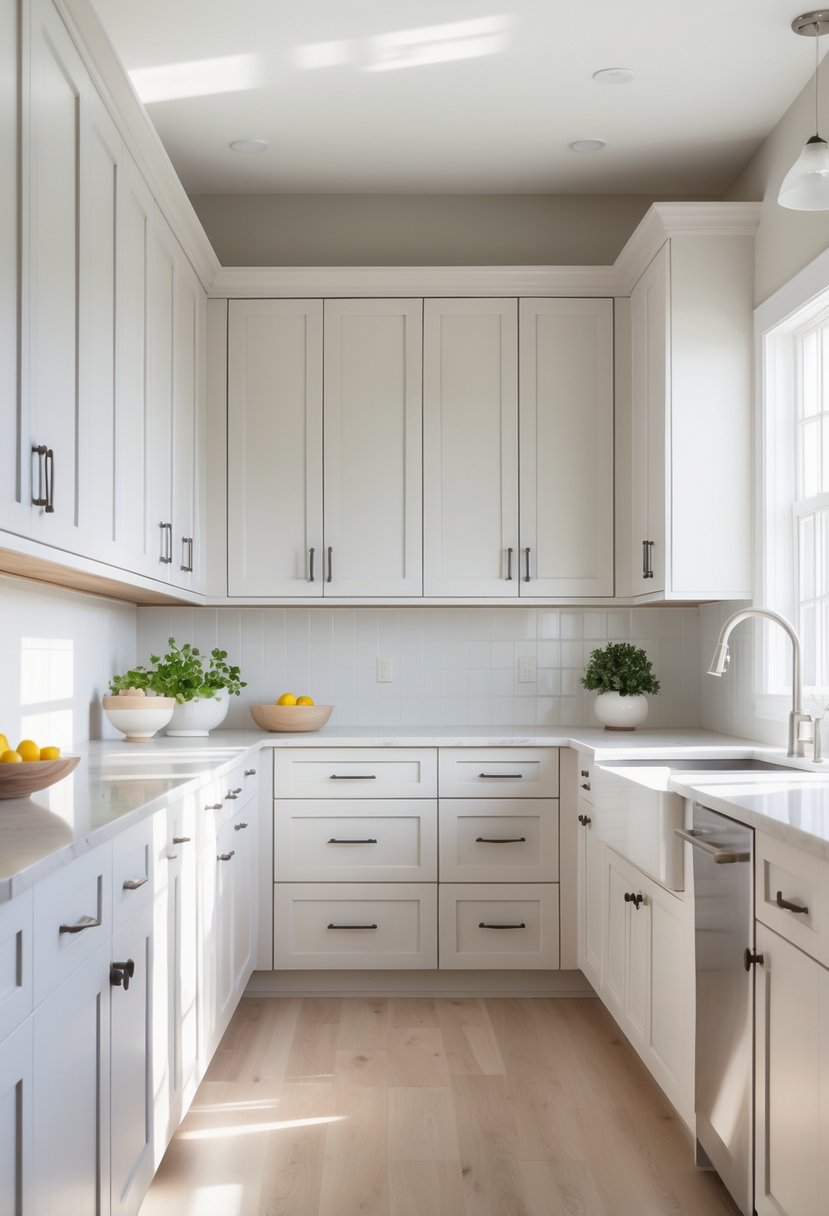
Shaker style cabinets feature a simple, clean design with recessed panel doors. They focus on function and minimalism, making them adaptable to many kitchen styles. Their timeless look has made them a popular choice for decades. Learn more about their design and history at this Shaker kitchen cabinets guide.
Kitchen Cabinets Design Ideas.
2) High-Gloss Cabinets for Modern Kitchens
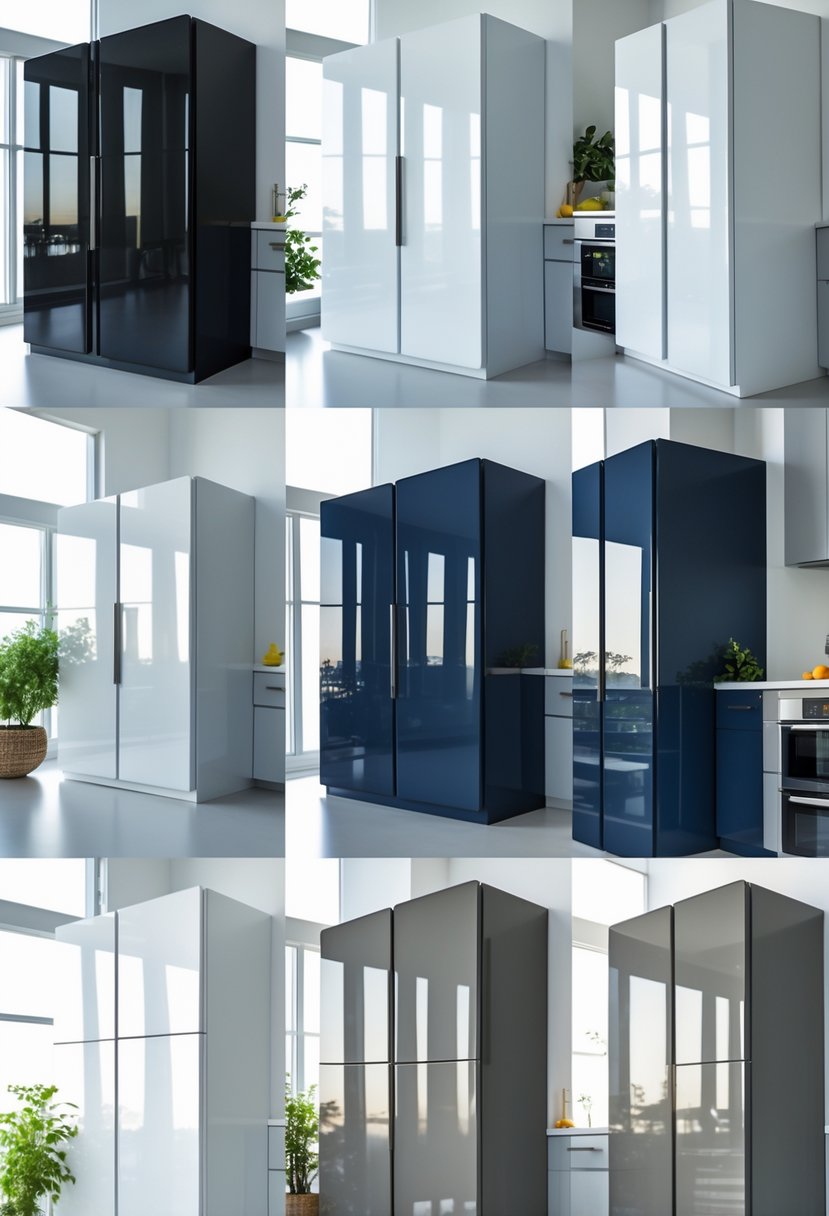
High-gloss cabinets offer a sleek and polished look that suits modern kitchens. They reflect light, making spaces appear brighter and larger. This finish is also easy to clean, which adds to its practical appeal in busy kitchens. For stylish options, consider high-gloss designs that blend form and function. For more details, see high gloss kitchen cabinets.
3) Farmhouse Cabinets with Rustic Finishes
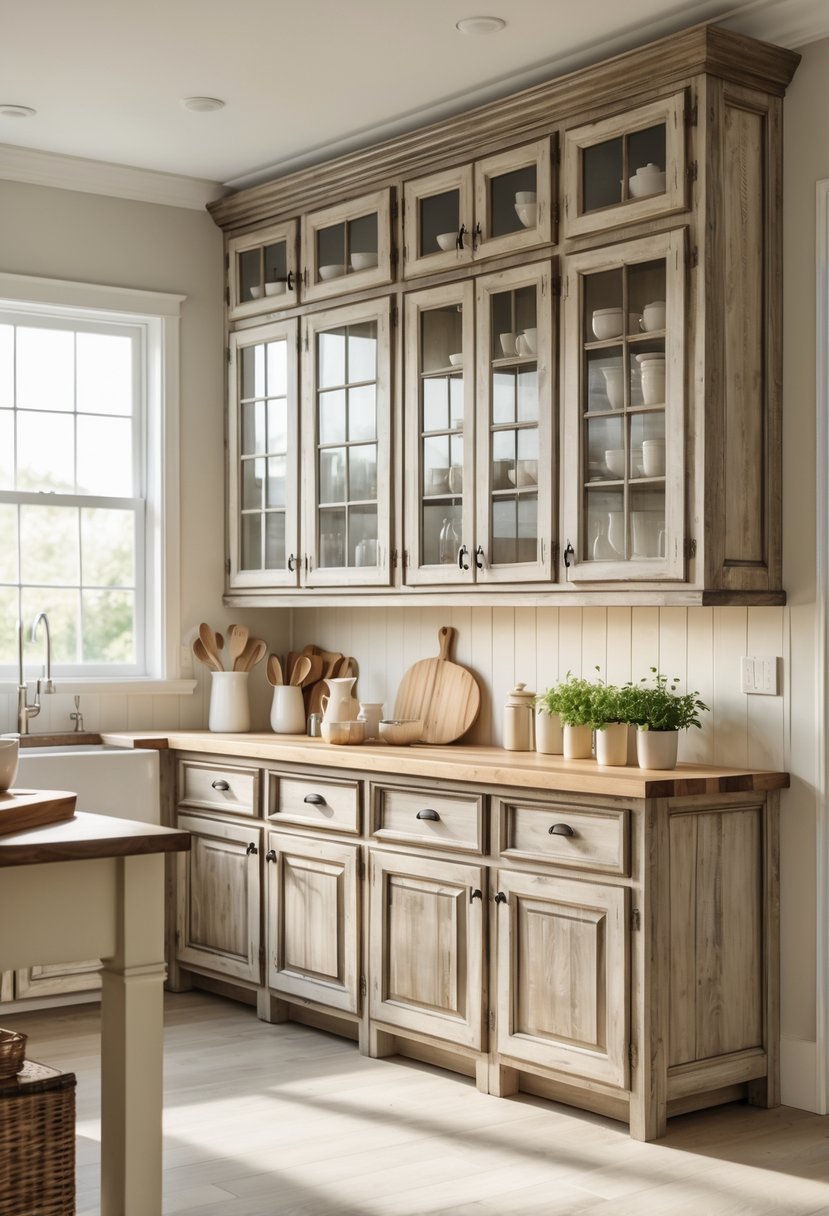
Farmhouse cabinets with rustic finishes use natural wood and distressed paint to create a warm, lived-in look. They often feature simple designs with visible grain and knots. These cabinets add a cozy, timeless feel to any kitchen while offering practical storage solutions. Explore more on farmhouse cabinet styles with rustic charm.
4) Two-Tone Cabinets Combining Light and Dark Hues Kitchen Cabinets Design Ideas
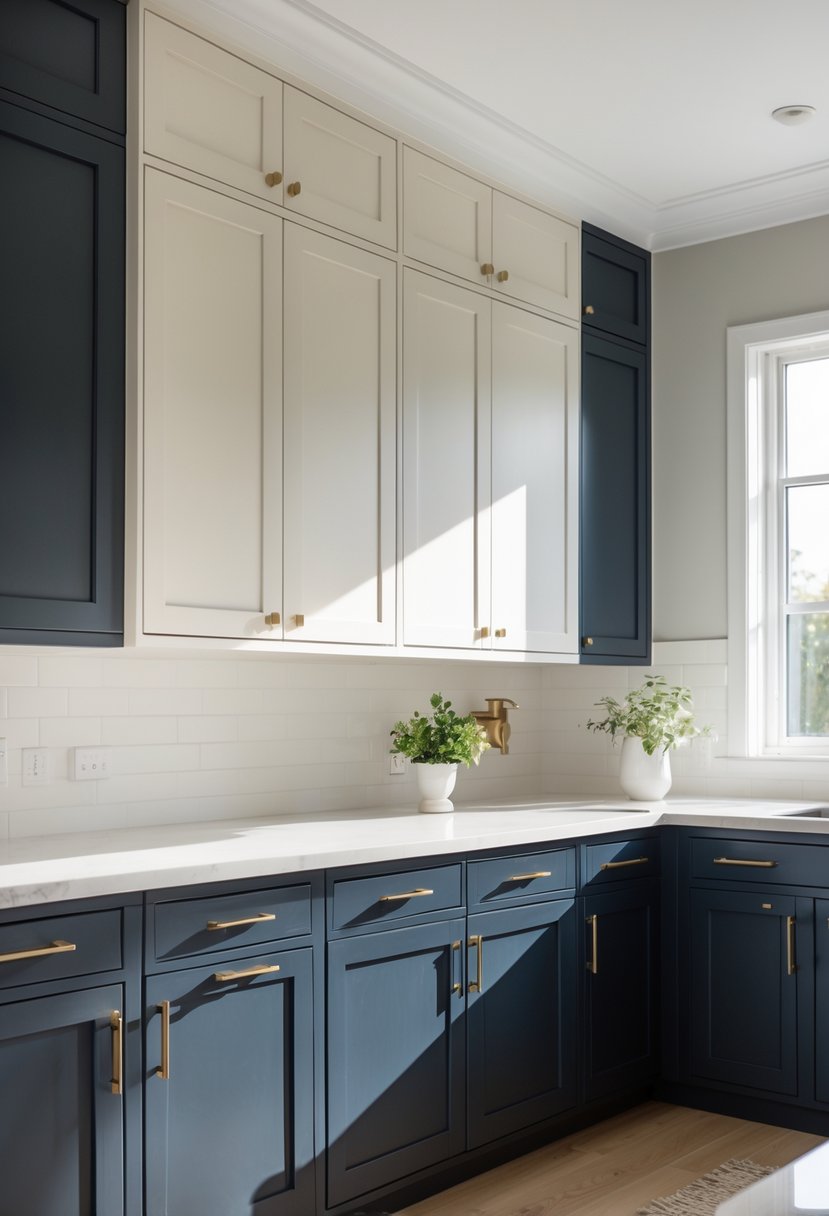
Two-tone cabinets use light colors on top and dark shades below to create balance. This contrast adds depth and interest to the kitchen’s look. Dark finishes like black or mahogany anchor the space, while light tones such as cream or white keep it bright and open.
This style allows defining different zones and highlights key features in the kitchen. It is practical and stylish, blending well with many home designs. For inspiration, see two-tone kitchens combining light and dark cabinets.
5) Glass-Front Cabinets to Showcase Dinnerware Kitchen Cabinets Design
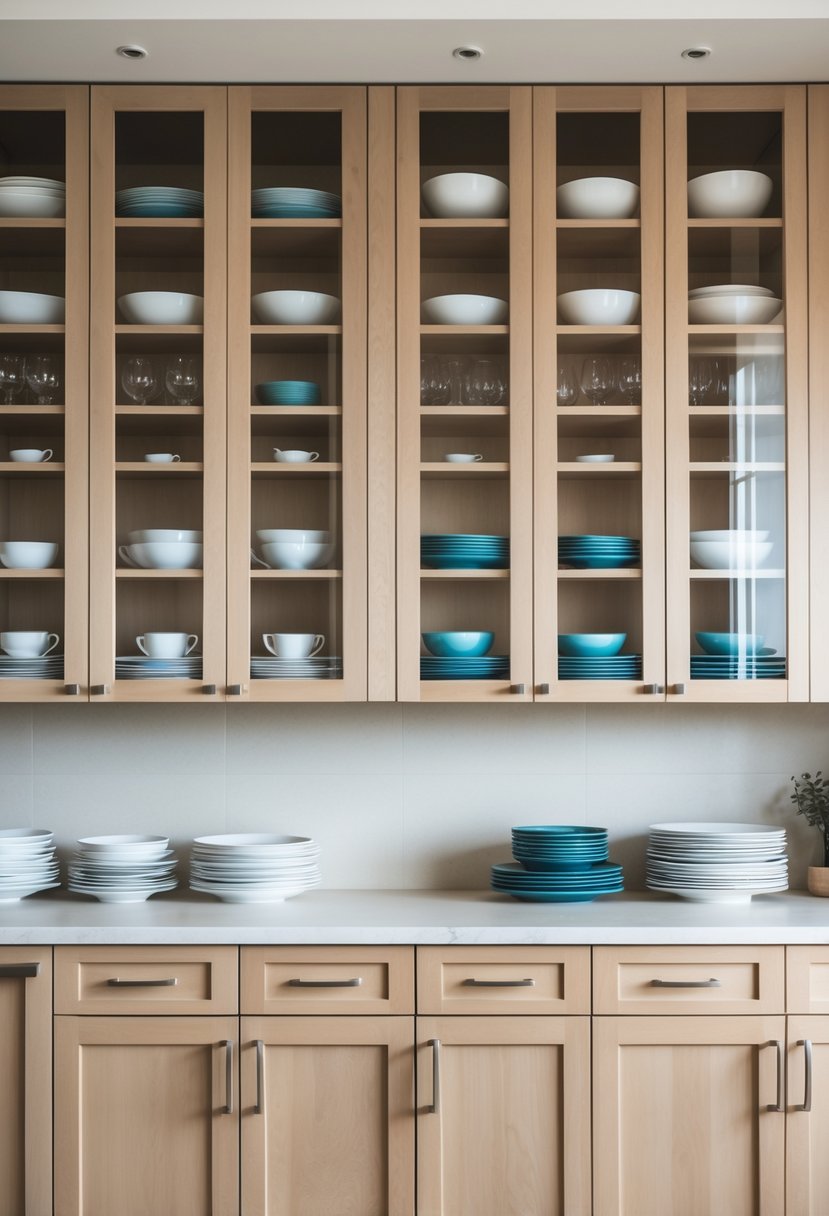
Glass-front cabinets offer a clear view of dinnerware, making them ideal for display. They keep dishes clean while adding a decorative touch. Fine china, crystal glassware, and colorful plates work well in these cabinets to create an organized and attractive kitchen feature.
For styling tips, see how to showcase items in glass kitchen cabinets.
6) Open Shelving for Airy and Practical Storage Kitchen Cabinets Design Ideas
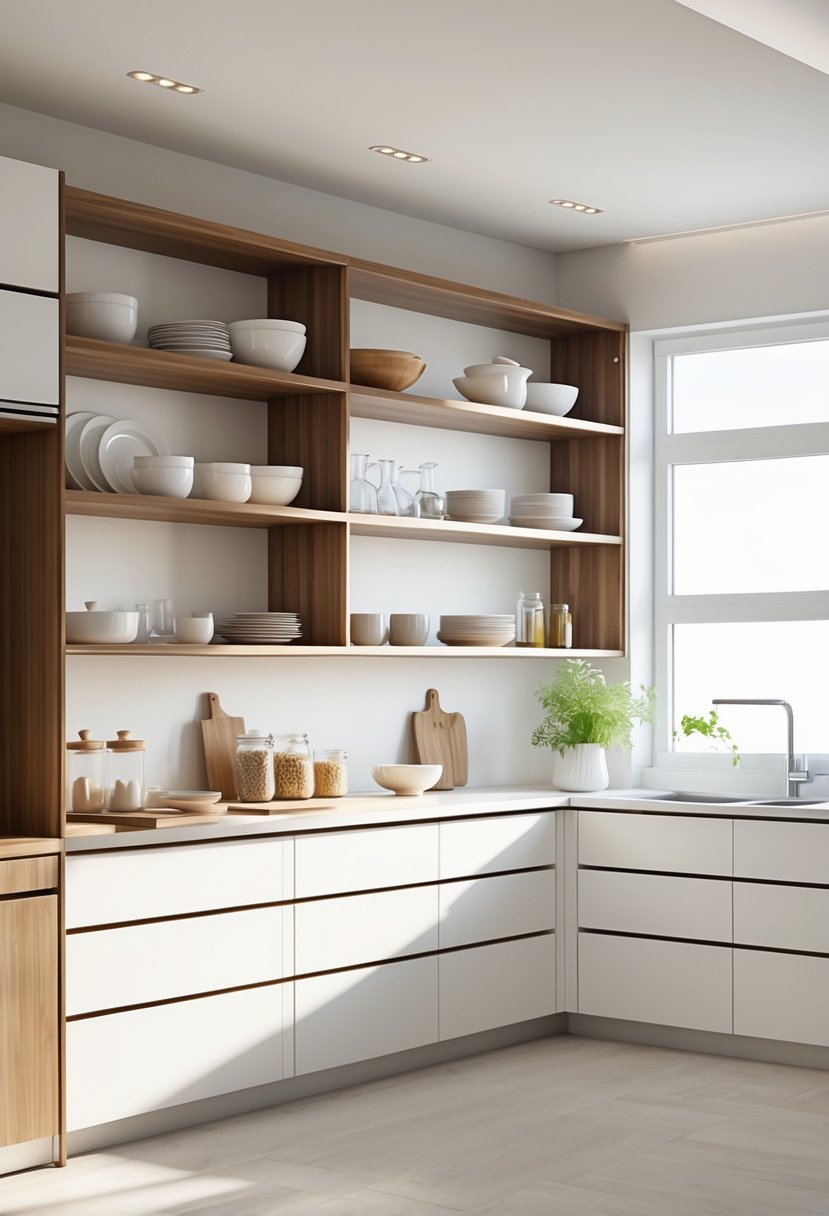
Open shelving creates a light and open feel in the kitchen. It allows easy access to everyday items like dishes and glasses. This design works well for displaying attractive kitchenware while keeping the space functional and organized.
Matching shelves to cabinets can make the look more unified and stylish. For more ideas on this design, see open kitchen shelving options.
7) Matte Black Cabinets for Bold Statements
Matte black cabinets offer a clean, modern look that fits many kitchen styles. They absorb light, creating a calm and elegant atmosphere. This finish balances boldness with simplicity, making the kitchen both striking and timeless. For more ideas, see matte black kitchen cabinet designs.
8) Soft-Close Cabinet Doors for Enhanced Functionality
Soft-close cabinet doors use a special mechanism to stop the door gently before it slams shut. This feature reduces noise and prevents damage to the cabinets. It also helps extend the life of the doors by minimizing wear and tear. Many homeowners prefer soft-close doors for their quiet and smooth operation. See more on soft-close cabinets.
Design Principles for 8 Kitchen Cabinets
Designing with eight kitchen cabinets requires careful planning of layout and style. The best approach balances space use and visual appeal while fitting the room size and user needs.
Optimal Layout Strategies
The layout should maximize storage and workspace. Arranging cabinets in a U-shape or L-shape often works well for eight cabinets, creating an efficient workflow and easy access to important areas like the sink, stove, and fridge.
Using vertical space is crucial. Tall cabinets can store less-used items, freeing counter space. Corner cabinets with rotating shelves or pull-out trays help use awkward spaces efficiently.
Spacing between cabinets matters. There should be enough room to open doors and drawers without obstruction. Grouping related items in nearby cabinets supports smooth cooking and cleanup.
Color Coordination and Material Choices
Selecting colors and materials impacts both kitchen style and perceived size. Light colors like white or soft gray reflect light, making a small kitchen feel larger. Darker tones create contrast but can shrink space visually if overused.
Materials should balance durability and style. Wood offers warmth and classic appeal but requires maintenance. Laminates and painted finishes are easier to clean and often more budget-friendly.
Mixing cabinet materials can add interest. For example, pairing a wood base with glass-front upper cabinets balances solidity and openness. Hardware style and finish should complement cabinet colors for a unified look.
For more ideas on efficient layouts and materials, see 8×8 kitchen cabinet layout ideas.
Storage and Functionality Enhancements
Effective kitchen cabinet design improves both storage capacity and ease of use. Cabinets that combine smart organization with modern hardware can make cooking and cleaning tasks faster and less stressful.
Smart Organization Solutions
Smart organization focuses on maximizing every inch of cabinet space. It includes adjustable shelves, pull-out trays, and built-in dividers. These features keep items visible and easy to reach.
Install deep drawers for pots and pans, and use vertical dividers for baking sheets and trays. Corner cabinets benefit from lazy Susans or swing-out shelves to use hard-to-reach areas efficiently.
Organizers inside cabinets should match the types of items stored, such as spice racks or utensil holders. This reduces clutter and speeds up meal prep by keeping essentials grouped and accessible.
Integrating Modern Hardware
Modern hardware increases cabinet usability through smooth, reliable mechanisms. Soft-close hinges prevent doors from slamming and extend cabinet life.
Drawer slides with full extension allow users to access items stored at the back. Push-to-open hardware eliminates handles for a clean look while maintaining function.
Other options include pull-out trash bins, built-in cutting boards, and specialized racks for wine or plates. These choices add value by combining convenience with a neat appearance.
For more ideas on designing functional cabinets with modern features, visit how to design kitchen cabinets that maximize storage and style.
Frequently Asked Questions
Maximizing storage and making the most of an 8×8 kitchen requires careful planning of cabinet placement and design. Creating balance between functionality and style is key for small spaces, especially when integrating features like islands or sinks.
What are the best design practices for maximizing storage in an 8×8 kitchen layout?
Using pull-out shelves and vertical storage in corner cabinets helps increase usable space. Installing tall cabinets that reach the ceiling adds extra storage without cluttering the room. Combining drawer organizers and trash inserts improves organization in limited areas.
How can I integrate an island effectively into an 8×8 kitchen space?
A small, narrow island with built-in storage or seating works best to avoid crowding. It should allow at least 36 inches of clearance on all sides to maintain good traffic flow. Islands with multi-functional features, like a prep sink or additional drawers, maximize utility.
What cabinet styles are recommended for kitchens with 8-foot ceilings to create the illusion of more space?
Shaker style cabinets with clean lines offer a timeless look without overwhelming the ceiling height. Glass-front cabinets open up visual space and reduce heaviness. Choosing lighter colors for upper cabinets can also make the room feel taller.
Which types of kitchen cabinets are most suitable for a galley kitchen layout?
Slim cabinets and tall storage units fit well in narrow galley spaces. Pull-out pantry shelves and deep drawers work efficiently for easy access. Keeping cabinet handles minimal and uniform helps maintain a sleek and uncluttered look.
How can I incorporate a sink into 8-foot kitchen cabinetry without compromising on functionality?
Positioning the sink near window areas or in a corner can free up counter space. Using base cabinets with built-in compartments for cleaning supplies keeps the area organized. Maintaining sufficient countertop space on either side of the sink ensures comfortable use.
Are 42-inch cabinets too tall for a kitchen with an 8-foot ceiling, or can they be utilized effectively?
42-inch cabinets can be used if installed with a suitable crown molding or a built-in soffit to prevent the room from feeling cramped. They provide more storage but may reduce upper wall space for lighting or decorations. Proper measurement and ceiling height consideration are essential for balance.
For more detailed answers, see Frequently Asked Questions about Cabinets.

